The largest contributions in the history of the European Space Agency, €22.1bn, have been approved at its Council meeting at Ministerial level in Bremen, Germany.
Ministers and high-level representatives from the 23 Member States, Associate Members and Cooperating States confirmed support for key science, exploration and technology programmes alongside a significant increase in the budget of space applications – Earth observation, navigation and telecommunications. These three elements are also fundamental to the European Resilience from Space initiative, a joint response to critical space needs in security and resilience.
“This is a great success for Europe, and a really important moment for our autonomy and leadership in science and innovation. I’m grateful for the hard work and careful thought that has gone into the delivery of the new subscriptions from the Member States, amounting to a 32% increase, or 17% increase if corrected for inflation, on ESA’s 2022 Ministerial Council,” said ESA Director General Josef Aschbacher.
“In the face of a challenging geopolitical situation all the States contributing to the ESA budget, and indeed the European Commission, have put their faith in ESA to keep delivering programmes that will support European leadership in space, and help stretch our capabilities on Earth, in orbit, and into deep space. While we celebrated 50 years of achievements this year, the work is only beginning.”
This year’s Ministerial Council was the first stage of the implementation of ESA’s Strategy 2040, setting the course for European space ambitions and defining the objectives that must be met to achieve long-term goals for Europe’s activities in space and in applications on Earth.
Empowering Europe to lead in space science
Appropriately, in its 50th anniversary year, ESA has re-committed to science. The Member States have guaranteed an historic increase of 3.5% per year beyond inflation that will enable some of the most imaginative missions in our history and bolster European scientific leadership. The first step will be to deliver the missions described by the Cosmic Vision long-term plan – including LISA and NewAthena . But the next great leap for science will be enabled by technology development for missions under the Voyage 2050 plan, most notably the ambitious plan to search for life on Enceladus with the large-class mission ‘L4’ to Saturn and its moon. This mission requires immediate technology development to reach the south pole of Enceladus under ideal illumination.
Boosting European security and resilience
The European Resilience from Space initiative has been introduced to help support dual-use capacity for Europe. Initial funding will go towards a system giving access to high- temporal and spatial resolution satellite images – through pooling and sharing of resources and building a network to fill gaps in observations. This will be supported by new navigation services from low Earth orbit and by secure connectivity. The clear mandate for use of space applications for non-aggressive defence purposes signifies an historic change for ESA. It was decided at CM25 that subscriptions will remain open until next year to allow participating states to accommodate the new programme.
ESA technology at the heart of all missions
The technology to support this programme and ESA’s other innovative missions will be developed using a substantially strengthened budget for technology enablers, critical components, digitalisation and emerging technologies. Non-dependence in technology is key to advancing Europe’s ambitions in space, alongside its guaranteed access to space.
A range of key activities in the European space ecosystem will be strengthened:
- Europe’s launchers Ariane 6 and Vega-C will continue to lead the way to space. ESA will continue to support the evolution of the European launch market, and the development of new transport to orbit including the European Launcher Challenge.
- Europe’s markets for space hardware and space data will be developed with the continuation of successful commercialisation programmes. ESA will continue to drive private investment, boost innovation and strengthen SMEs and new entrants to the space industry. A budget of €3.6 bn is agreed towards co-funded projects, expected to attract substantial private funding.
- Europe’s lead in Earth observation will be maintained with the preparation of the second generation of Copernicus satellites (specifically the Sentinel-2 Next Generation and Sentinel-3 Next Generation Optical missions). Under FutureEO, ESA will develop and operate world-class Earth science missions, prepare future operational Copernicus and meteorological missions, and support the use of data for Earth Action.
Advancing exploration capabilities
ESA Member States have confirmed their commitment to exploration, with robust plans to enhance international partnerships. The Rosalind Franklin mission to land a rover on Mars is funded towards a launch date in 2028, while ESA will prepare missions to the Moon, the most important being the Argonaut lander. ESA will work on de-risking a range of other technologies to support European presence in low Earth orbit and beyond in the coming decades. Meanwhile, ESA and its Member States have agreed to implement short-term actions to guarantee European astronauts’ access to the International Space Station until its planned end of exploitation in 2030. The development of the LEO cargo return service was also confirmed at CM25 including two demonstration missions aiming at docking to the ISS. An interim meeting at Ministerial level is planned before CM28 to adjust to changes anticipated in international cooperation.
Defenders of the Earth
Three important missions account for the majority of funding in space safety and security: Ramses, Rise and Vigil. The Ramses mission, to be built on a tight schedule to intercept the asteroid Apophis on its close encounter with Earth in 2029 is funded, and will help to prepare for future potentially hazardous asteroids. The Vigil space weather mission, originally endorsed by CM22, will continue to implementation with the spacecraft expected to undergo preliminary design review early next year. To reduce waste in space in the future, the testing of on-orbit servicing will be funded through Rise, a partnership with industry.
The SAGA spacecraft – a demonstration mission for quantum communication – will move to construction and implementation. The Moonlight programme which envisages lunar communications and navigations services will continue development.
New ESA activities in Member States
ESA has signed letters of intent with a view to preparing new centres to be hosted in Member States. A letter of intent has been signed with Poland to examine the possibility of hosting a new centre specialising in security and dual-use/multi-use applications. Meanwhile, a letter of intent between Norway and ESA will allow both sides to evaluate the establishment of an ESA Arctic Space Centre in Tromsø.
Two Resolutions were approved during the Ministerial: the Resolution on Elevating the Future of Europe through Space; and the Resolution on the Level of Resources for the Agency’s Mandatory Activities for 2026-2030.
Source: ESA Media Relations




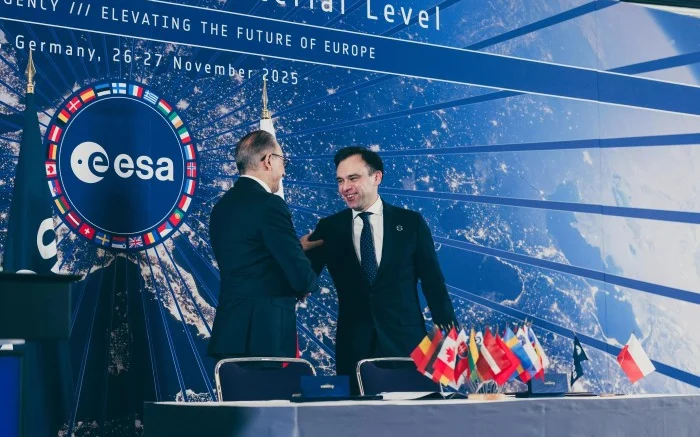
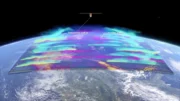
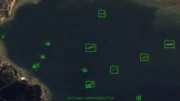
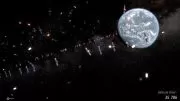
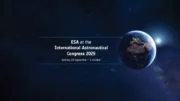
Be the first to comment on "SA Member States commit to largest contributions at Ministerial"